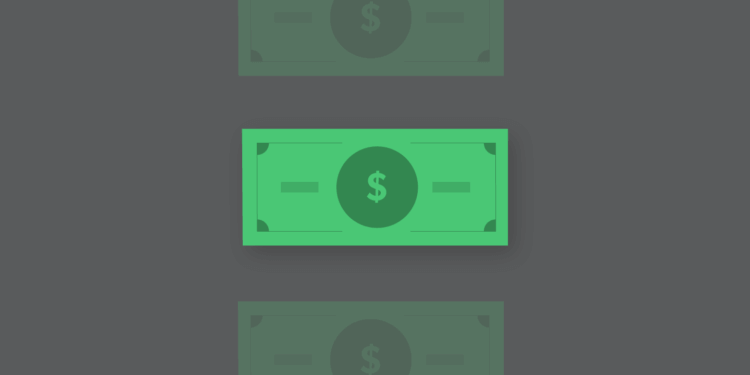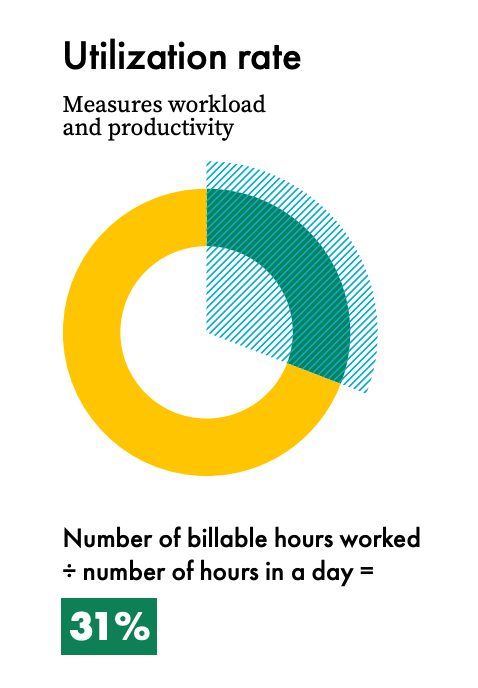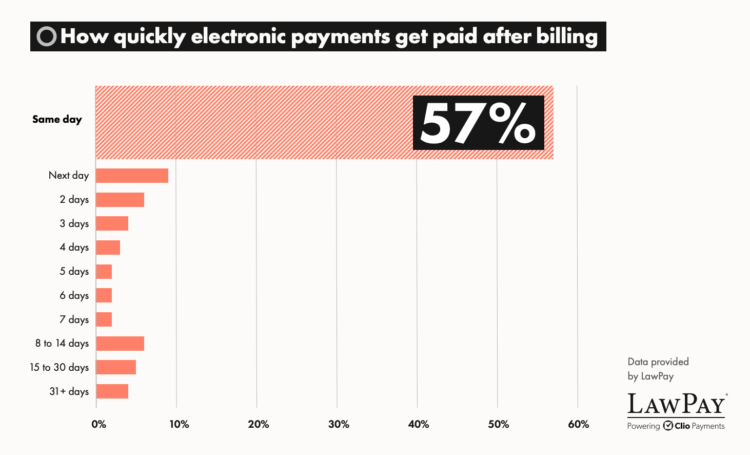
Given the events of the past year, preparing for success in 2021 can feel overwhelming for lawyers. But with the knowledge based on key lawyer statistics, preparing for 2021 can be a whole lot easier. From knowing the current number of lawyers in the US to how (and how much) attorneys across the country are billing, knowing up-to-date lawyer facts and statistics can give you a clearer picture of where you stand, and which direction you may want to head.
Whether you’re currently contemplating law school, starting your career as a new lawyer, or trying to guide your business in the right direction as a seasoned legal professional, we’ve compiled the following statistics about lawyers to illuminate where the industry stands today—and help you make key decisions for success in 2021.
1. There are 1.3 million lawyers in the US
Exactly how many lawyers are there in the US? According to the American Bar Association’s 2020 ABA Profile of the Legal Profession, there are currently about 1.3 million lawyers in the US. Specifically, for every 1,000 residents in the US, there are only four lawyers. Knowing the status and size of your industry helps you understand your playing field in the legal marketplace.
2. The states with the most lawyers are New York, Maryland, and Massachusetts
Where are the majority of those lawyers located? The ABA’s Profile of the Legal Profession reports that New York (with 9.5 lawyers per 1,000 residents), Maryland (with 6.7 lawyers per 1,000 residents), and Massachusetts (with 6.2 lawyers per 1,000 residents) were the states with the most lawyers per residents based on 2019 population data.
If you practice in these states, you’ll know that competition is tough. Making sure you have a strong law firm brand is one of the key ways you can stand out from your competitors. And if you don’t practice in these states, you can look into easing the access to justice gap and accessing more of the market in your area.
3. 37% of lawyers are female, and 86% are white
The American Bar Association’s 10-year look at lawyer demographic trends shows some movement towards equality (in 2010, only 31% of lawyers were female and 89% of attorneys were white), but the statistics about lawyers show that the profession still has work to do.
What does this lawyer statistic mean for your law firm? As Lawline highlights, diversity has many benefits, including increasing innovation at your firm and bringing more diverse clients. To improve law firm diversity and inclusion with your firm’s brand, Katy Goshtasbi underscores a powerful 4-step process to reimagining your law firm brand with diversity and EQ in mind.
4. Women outnumber men in law schools


Looking again at the ABA’s Profile of the Legal Profession, the number of female law students is rising: Of the 112,000 law school students in the US, 53% are women (and, at four law schools, women actually outnumber men two-to-one).
Comparing this to the statistic 3 above, there seems to be a disconnect between the number of women in law schools, and the number of women moving on to becoming legal practitioners. The Council on Foreign Relations (CFR) indicates that in the US, the top barriers women face in the workplace include getting a job and protecting women from violence. It is worth examining how your law firm can foster a better environment for hiring more women and improving diversity.
5. Jobs for lawyers are expected to grow 4% in the next decade
The job outlook for lawyers—according to the US Bureau of Labor Statistics’ Occupational Outlook Handbook—is overall positive, with a 4% projected growth rate for lawyers between 2019 and 2029, which is in line with the projected average for all jobs.
6. In 2019, the median pay for a lawyer was $122,960


As of May of 2019, the US Bureau of Labor Statistics Occupational Outlook Handbook reports that the median annual wage for lawyers was $122,960. While it varies by region and practice area, knowing the lawyer statistics for average pay can help you assess where you stand when it comes to income.
7. The average hourly billable rate for lawyers is close to $300 per hour
Billable rates for lawyers are rising. As reported in Clio’s 2020 Legal Trends Report, the average hourly billable rate for lawyers has been on the upswing in recent years, and was nearly $300 by the start of 2020.
8. The highest average hourly billable rate by state is $380 in DC
When it comes to hourly rates by state for lawyers, the 2020 Legal Trends Report shows that lawyers in DC charge the highest hourly rate, followed by $338 per hour by lawyers in California.
9. The lowest average hourly billable rate by state is $166 in West Virginia
At the other end of the spectrum, the lowest average hourly billable rate for lawyers in the US is in West Virginia, according to the 2020 Legal Trends Report. The report also looks at rates adjusted for cost of living, which is worth looking at if you’re deciding where to practice.
10. The highest average hourly billing rate by practice area was $347 for bankruptcy
Different practice areas charge vastly different rates, as well. The 2020 Legal Trends Report found that bankruptcy was the practice area with the highest average hourly billing rate—in some cases, by a great amount.
11. The lowest average hourly billing rate by practice area was $88 for juvenile
The practice area with the lowest average hourly billing rate for lawyers? Juvenile law, according to Clio’s 2020 Legal Trends Report.
12. Billable hours make up 31% of a lawyer’s work day


Tracking performance and productivity impacts your success as a lawyer, so lawyer facts and statistics that highlight how attorneys spend their time are invaluable performance indicators. The 2020 Legal Trends Report, for example, reports a utilization rate (i.e. the number of billable hours worked divided by the number of hours in a day) of 31%—which means that 69% of a lawyer’s work day is spent on non-billable activities.
13. Lawyers don’t collect on 12% of the hours they bill to clients
The 2020 Legal Trends Report also notes a collection rate (that is, the percentage of hours collected divided by the number of hours invoiced) of 88%—which means that lawyers are not paid for 12% of hours that they’ve worked and billed to clients. Finding a way to increase this rate could mean more potential revenue coming in for the hours already worked.
14. 37% of legal professionals say most if not all lawyers should run their practice virtually
Circumstances related to the global pandemic have changed how—and where—many lawyers work, with working virtually becoming the norm (whether temporarily or more permanently). While that move may have been unexpected or earlier than planned for some, survey data from the 2020 Legal Trends Report shows that more and more legal professionals foresee virtual work becoming the norm. In fact, 37% indicate that most—if not all lawyers—should run their legal practice virtually in the future.
15. 72% of consumers would prefer to pay their legal fees via payment plans
Another key statistic about lawyers from the 2020 Legal Trends Report is that today’s consumers want convenience and options when it comes to paying their legal fees. The majority of consumers surveyed indicate that they’d prefer to pay their legal fees on a payment plan. The Legal Trends Report also found that 65% of consumers prefer to pay electronically (that is, via electronic forms of payment like credit cards, debit cards, or online payment systems like Clio Payments, PayPal, or Apple Pay) over cash or check.
This data reveals an opportunity for lawyer success in the year to come: If the majority of consumers want to pay their legal fees via payment plan and electronically, but fewer lawyers are set up to offer them, setting your firm up to offer legal payment plans could make you stand out positively to potential clients.
16. 40% of consumers would never hire a lawyer who didn’t take debit or credit cards
Reinforcing these lawyer statistics, as Clio’s 2019 Legal Trends Report noted, the ability to make payments electronically can be a deal-breaker for some clients—with 40% of consumers who had dealt with a legal issue in the past two years indicating that they’d never hire a lawyer who didn’t take credit or debit cards. This means that law firms who offer legal credit card payments could have an edge over their competitors by letting clients pay the way they want to.
17. 57% of electronic payments to lawyers get paid within the same day they are billed, and 85% get paid within a week


While the statistics indicate that electronic payments are a benefit to consumers, it also seems to be in lawyers’ best interests, with the 2019 Legal Trends Report showing that electronic payments help lawyers get paid faster. Specifically, 57% of electronic payments get paid on the same day that they’re billed.
18. 59% of lawyers are using web-based software solutions
Cloud computing continues to be significant for business success, with the majority of lawyers using online solutions—59% of participants in the 2020 ABA Legal Technology Survey Report said that they used web-based software services or solutions.
19. 62% of law firms budget for technology
This is a slight increase from 2019, where only 60% of firms indicated to the ABA Legal Technology Survey Report that they budgeted for tech. We expect this number to increase significantly in years to come.
20. 68% of law firms say their website is mobile-friendly
When looking at the use of technology in the legal profession, the ABA 2020 Legal Technology Survey Report finds that the majority of respondents knew that their websites were mobile-friendly—which is key when you consider how prevalent internet use is among consumers. As the 2020 Legal Trends Report notes, 90% of adults in the US use the internet and 81% own a smartphone. With this in mind, adopting technology like a legal client app could provide opportunities to better reach and better serve increasingly tech-savvy consumers.
21. 59% of consumers seek a referral for their lawyer

When it comes to finding a lawyer, referrals are key to who clients choose. As the 2019 Legal Trends Report shows, 59% of clients look for a referral. Friends and family are the most common source, followed by referrals from other lawyers or referrals from non-legal professionals—like an accountant or real estate agent. Networking and can help you stand out in these groups, while providing client-centered services can help ensure positive referrals.
22. 57% of consumers look for a lawyer on their own, and many search online
While referrals are important, the 2019 Legal Trends Report also shows that the majority of clients look for a lawyer on their own—a trend that will likely continue to increase with the pandemic moving more and more searches for services online. Make sure you provide a client-centered experience in all aspects of your business, starting by making it easy for potential clients to access your legal services online (and specifically, via Google). By tailoring your practice around client experience, you can better serve potential clients and have more success.
Learn more about getting found online and creating a great law firm website.
23. Firms using multiple technologies collected 20% more per month per lawyer in 2020
Using some technology can be advantageous to lawyers. But using multiple technologies is shown to be better when it comes to drawing in revenue. Clio’s 2020 Legal Trends Report looked at the use of three key cloud technologies for lawyers: online payments, client portals, and client intake and CRM software. The report’s analysis shows that, as of 2020, firms that used all three technologies averaged a higher volume of casework per lawyer and earned over 20% more revenue.
For example, using custom reporting tools like myFirmData to help you assess and track data for your firm can help you monitor your firm’s growth and add to your law firm technology stack.
24. 37% of consumers now prefer videoconference when meeting their lawyer for the first time


With COVID-19 moving many aspects of life online, more clients are willing—and in many cases, prefer—to conduct legal meetings virtually. The 2020 Legal Trends Report shows that 37% of consumers prefer to meet via video for their first meeting with a lawyer, and 50% prefer to meet via videoconference for follow-up meetings as well. In fact, the report shows that 52% of consumers believe that most legal matters could be handled remotely.
25. 89% of legal professionals believe court systems can be improved with better access to technology.
One benefit of the sudden need to rethink meeting in person is that it’s shown that technology could be used to improve court processes. As the majority of legal professionals indicate in the 2020 Legal Trends Report, using more technology could lead to opportunities for positive changes in the courts. Moving processes like case management and court files to electronic systems could increase efficiency and affordability for the people they are meant to serve—and ultimately help improve access to justice.
26. 45% of legal professionals believe technology can help create a more equitable justice system.
Technology adoption isn’t always a cut-and-dry topic, but the 2020 Legal Trends Report shows that legal professionals see opportunity to use tech to promote more equality in the justice system. This is an inspiring and encouraging statistic for the future of the legal industry.